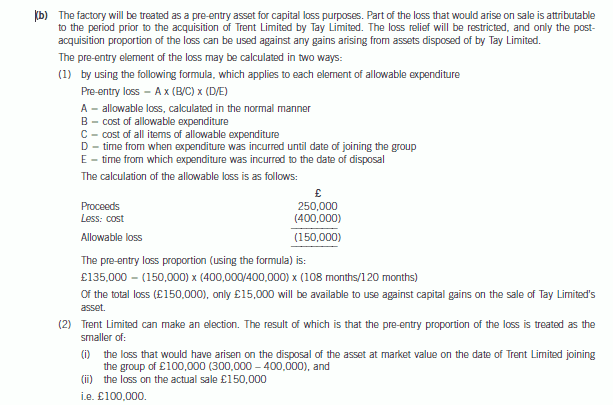ACCA考试报名时间已公布,报名前宁夏考生要这么备考!
发布时间:2020-01-10
早在2019年年末的时候就公布了ACCA考试报名时间,备考的你知道吗?同时,很多小伙伴来咨询51题库考试学习网,想问问ACCA考试那么多科目应该怎么样有效地、科学地复习呢?不用担心,51题库考试学习网帮大家整理了一些考试小技巧,帮助大家事半功倍地通过考试,早日脱坑:
可能有些初次备考ACCA考试的萌新不了解报名时间,51题库考试学习网再次提醒大家2020年ACCA考试的报名时间:
2020年3月ACCA考试报名时间报名周期
提前报名截止 2019年11月11日
常规报名截止 2020年1月27日
后期报名截止 2020年2月3日
2020年6月ACCA考试报名时间报名周期
提前报名截止 2020年2月10日
常规报名截止 2020年4月27日
后期报名截止 2020年5月4日
2020年9月ACCA考试报名时间报名周期
提前报名截止 2020年5月11日
常规报名截止: 2020年7月27日
后期报名截止 2020年8月3日
2020年12月ACCA考试报名时间报名周期
提前报名截止 2020年8月10日
常规报名截止 2020年10月26日
后期报名截止 2020年11月2日
AB(F1)
AB(F1)这门课,首先要从题型出发来分析:目前AB(F1)的题型主要是46个单选题+6个多任务题;因此,从题型上来看就可以分析得知大部分内容其实不需要考生去原封不动地去死记硬背知识点,更多的是要求考生理解性记忆,比如它会教大家用一些模型去分析企业所处的内部以及外部环境,所以考生所学的的是它如何分析这个模型的这种方法,活学活用才能以不变应万变。同时,它还会教一些关于职业道德,企业社会责任的简单介绍。
说到AB(F1),就不得不说SBL课程,其实它们两者是有重复的地方的,就比如SBL课程会把这些AB(F1)课程中的知识点做深入并细化地讲解,就好比分析内外部环境之后企业将如何面对环境的变化、企业在专业层面上的战略,以及在公司治理,财务从业人员的职业道德等做了更深入且全面的介绍。总而言之,AB(F1)是基础,而SBL课程就是延伸。
但考生需要注意的事情就是:因为国家对ACCA考试规则做了限制,你是没有办法同时报考AB(F1)与SBL两个科目的,因为中间还隔着F4-F9 6门技能课程。所以你能做的就是打好基础。对于备考SBL,AB(F1)的知识点是大量的基础知识,所以要注意在考过AB(F1)之后依然需要巩固和记忆相关的知识点,不要把所学的知识点给遗忘了,如果到时候重新来复习的话,就太浪费时间了。
文字类考试对考生的记忆力的要求是极高的,不光要求考生要记忆从中的知识点并且是要熟练记忆。因此51题库考试学习网建议在选择考试科目时要避免选择同时备考多科需要高强度记忆的考试科目,例如F4《Corporate and Business law》以及F8《Audit and Assurance》,如果这些同时备考的话,会增加记忆难度,间接地导致学习效果的下降,最后导致考试成绩的不理想,所以不建议在同一考季中备考多个文字类考试。但是,51题库考试学习网推荐在相邻两个考季中参加考试(比如2020年6月份准备F4,那么2020年6月份就准备F8),因为文字类考试的内容或多或少是有重叠的部分的,区别仅仅在于侧重点不同,识记内容有重叠部分;就比如F8学得很扎实的小伙伴对于后面的学习SBL或者选修高级审计与鉴证《Advanced Audit and Assurance(AAA)》是赢在了起跑线上的,优势是十分巨大的。这就是为什么有一些考神能一次性通过ACCA考试的原因:合理地、科学地、有目的性地、高效地去学习,巧用复习方法能让你的学习效果事半功倍。
F2《Management Accounting》、F5业绩管理《Performance Management》和F9选修高级业绩管理《Advanced Performance Management》
同理,对于F2《Management Accounting》、F5业绩管理《Performance Management》和F9选修高级业绩管理《Advanced Performance Management》。F2课程内容是F5和选修高级业绩管理的基础,三科课程内容都涉及管理会计与财务会计的区别,涵盖:管理会计,管理信息,成本会计,预算和标准成本,业绩衡量,短期决策方法。同样,差别也仅仅是在于侧重点以及研究深度和广度的不同而已。因此,51题库考试学习网建议学习能力强一点的考生将F2和F5考虑同时学习,而学习能力偏弱的考试就先学F2再学F5;在选择报考科目的时间上,建议将F2、F5以及选修高级业绩管理这三科在相邻考季中备考,因为F2中的variance,在F5中体现更加灵活、更加具体。先学F2,再看F5,F2比较简单,很多常识的知识,为F5打好基础,也加深对F2的理解。在这些学科中,ACCAer们将会学到:如何处理基本的成本信息,并能向管理层提供能用作预算和决策的信息。而与此同时,F9科目又是F5升级版,课程研究的更加具体化和形象化,但是RATIO部分是一样的,所以51题库考试学习网建议可以将F5和F9放在同一考季去考试。
F6和P6高级税务《Advanced Taxation》
如果你有选修学习P6高级税务《Advanced Taxation》的打算,可以建议把F6放在F阶段最后一门,在考完F6考试之后,就赶紧学习P6。因为,F6《Taxation》是P6《Advanced Taxation》的直接基础。这门课程涵盖:英国税收体制,个人所得税,企业所得税,资本利得税,增值税,遗产税这五大税种应交税额的计算以及基于个人收入缴纳的国民保险和养老金投资的计算。F6考试中以税负计算为主,而P6更偏向在熟悉税法规定后,帮客户做合理纳税筹划。为什么不将F6和P6在同一考季报考呢?也是由于国家的相关规定,禁止在同一考季报考的,因此在考完F6考试之后,就赶紧学习P6。可以安排在同一年度相邻考季考这两门是最好的,因为两个科目中的相关知识点,例如:税率不变也不用重新记;科目类别要选择一致的,例如F6选择了UK ,P6也就选择UK,但是这样选择存在一个弊端就是,由于在中国P6这门课程学习的人不多,学习资料与课程也很少,如果将F6和P6放在两个相邻,备考时间相对较紧凑,对于资料不好找的科目可能复习到的知识点可能存在不太全面的问题。因此,同学们应根据自身需求谨慎选择。
P2和F7
P2在2018年9月改革为新科目SBR(Strategic Business Reporting)。课程涵盖是十分广泛的,例如:财务会计,财务报表,公司合并报表,分析并解读财务报表。P2的核心就是:让你如何运用合理地会计准则和概念框架编制财务报表同时又能够分析并解读财务报表。不难发现的是:P2有一大部分是重复F7的内容,但是由于ACCA考试规则规定了必须F阶段考试全部通过完毕之后才能报考P阶段,所以51题库考试学习网建议考生在考完F阶段考试之后,可以在下一次考试先考P2,将F7的知识点灵活运用。
如果想要学习4选2的P4的话,可以再F9考完之后学习P4,P4《Advanced Financial Management》是F9《Financial Management》的延伸考查,与SBR也有一定的联系。
课程涵盖:高级投资评估,公司并购、重组,高级风险管理,跨国公司面临的经济环境,您将会学到作为一名高级财务人员进行与财务管理相关决策必备的知识、技巧和进行职业判断的能力。
F8《Audit Assurance》是P7《Advanced Audit Assurance》的直接基础,与F3,F7,SBL等课程都有一定的关系。
F8课程中涵盖:内部审计和外部审计以及设计建立及实施内控程序,重点学习审计师如何了解企业情况,对审计风险进行评估,制定审计计划,在国际审计准则下如何进行设计,建立并实施审计程序,以及各种审计报告和审计意见。
P7是F8的延伸,与p2也有一定的联系。从三个科目之间存在的共同点可以看出:F7和P2主要学习如何编制财务报表,F8和P7学习如何审计财务报表。
P7课程涵盖:监管环境与制度,职业道德,实务管理,历史财务信息的审计与报告,其它与审计相关的认证业务。
在这里要提醒各位小伙伴们,ACCA在P阶段从P4到P7是选修科目,学员们只要选择学习两门并通过考试就可以了。但这4门选修科目却基本通向不同的工作领域。
P4《Advanced Financial Management》更偏向金融方面,想去投行券商的小伙伴们可以考虑选择P4
P5《Advanced Performance Management》偏向财务管理方向,如果对分析公司财务状况以及咨询岗位感兴趣的小伙伴可以选择P5
P6《Advanced Taxation》及P7《Advanced Audit Assurance》可以让各位学员们对税法以及审计准则的知识熟练掌握,对于想在事务所工作的小伙伴们是不错的选择。
鲤鱼不跃,岂可成龙?大鹏驻足,焉能腾空?十年磨刀霍霍,只为今朝一搏。最后51题库考试学习网祝大家都能顺利通过ACCA,取得好成绩!
下面小编为大家准备了 ACCA考试 的相关考题,供大家学习参考。
(b) Advise on the capital gains implications should Trent Limited’s old building be sold as proposed. Support your
advice with relevant calculations. (4 marks)

This gives a higher post-entry loss of £50,000 (150,000 – 100,000) and so it is advisable for Trent Limited to make
this election.
The £100,000 of pre-entry losses are still available, but can only be set against gains on assets which:
(i) Trent Limited sold prior to being acquired (subject to the normal carry back restrictions), or
(ii) Trent Limited already owned when it was acquired, or
(iii) Trent Limited acquired from outside the group and used in its trade after being bought by Tay Limited.
(c) Briefly describe the principal audit work to be performed in respect of the carrying amount of the following
items in the balance sheet:
(i) development expenditure on the Fox model; (3 marks)
(c) Principal audit work
(i) Development expenditure on the Fox model
■ Agree opening balance, $6·3 million, to prior year working papers.
■ Physically inspect assembly plant/factory where the Fox is being developed and any vehicles so far manufactured
(e.g. for testing).
■ Substantiate costs incurred during the year, for example:
– goods (e.g. components) and services (e.g. consultants) to purchase invoices;
– labour (e.g. design engineers/technicians, mechanics, test drivers) to the payroll analysis;
– overheads (e.g. depreciation of development buildings and equipment, power, consumables) to
management’s calculation of overhead absorption and underlying cost accounts.
■ Review of internal trials/test drive results (e.g. in reports to management and video recordings of events).
■ Reperform. management’s impairment test of development expenditure. In particular recalculate value in use.
Tutorial note: It is highly unlikely that a reasonable estimate of fair value less costs to sell could be made for so
unique an asset.
■ Substantiate the key assumptions made by management in calculating value in use. For example:
– the level of sales expected when the car is launched to advance orders (this may have fallen with the delay
in the launch);
– the discount rate used to Pavia’s cost of capital;
– projected growth in sales to actual sales growth seen last time a new model was launched.
Note: requirement (a) includes 4 professional marks.
A central feature of the performance measurement system at TSC is the widespread use of league tables that display
each depot’s performance relative to one another.
Required:
(b) Evaluate the potential benefits and problems associated with the use of ‘league tables’ as a means of
measuring performance. (6 marks)
(b) A central feature of many performance measurement systems is the widespread use of league tables that display each
business unit’s performance relative to one another. In the case of service organisations such as TSC the use of league tables
emphasises the company’s critical success factors of profitability and quality of service by reporting results on a weekly basis
at the depot level. The fact that such league tables are used by management will actively encourage competition, in terms of
performance, among depots. The individual position of a business unit in the league table is keenly observed both by the
manager of that unit and his/her peers.
In theory, performance is transparent. In practice although each depot performs essentially the same function and is subject
to the same modes of measurement, circumstances pertaining to different business units may vary significantly. Some depots
may be situated near to the hub (main distribution centre), some may be located far away and some may be in urban zones
with well developed road networks whilst others may be in remote rural areas. Measuring performance via a league table
makes no allowance whatsoever for these relative differences, hence, inequality is built into the performance measurement
system.
Moreover, depot managers might be held responsible for areas over which they have no formal control. The network nature
of the business suggests that there will be a high degree of interdependence of depots; the depot responsible for collection
will very often not be the depot responsible for delivery. Therefore, it is frequently the case that business may be gained for
which the collecting depot receives the revenue, but for which the delivering depot bears the cost. Obviously this impacts
upon the profit statements of both depots. The formal system might not recognise such difficulties, the corporate view being
that ‘the business needs to be managed’; the depots should therefore see any such anomalies as mild constraints to work
around rather than barriers to break down. In such circumstances delivering depots and collecting depots should discuss such
problems on an informal basis. Such informal discussions are aided by close communications between depots recognising
the interdependencies of the business.
声明:本文内容由互联网用户自发贡献自行上传,本网站不拥有所有权,未作人工编辑处理,也不承担相关法律责任。如果您发现有涉嫌版权的内容,欢迎发送邮件至:contact@51tk.com 进行举报,并提供相关证据,工作人员会在5个工作日内联系你,一经查实,本站将立刻删除涉嫌侵权内容。
- 2019-12-31
- 2020-01-10
- 2020-01-09
- 2020-01-10
- 2020-01-10
- 2020-03-07
- 2020-03-14
- 2020-04-30
- 2020-03-25
- 2020-03-08
- 2020-01-10
- 2019-07-20
- 2020-03-14
- 2019-12-29
- 2020-05-01
- 2020-01-10
- 2020-01-09
- 2020-01-09
- 2020-03-08
- 2020-04-17
- 2020-05-13
- 2020-04-23
- 2020-02-04
- 2020-04-30
- 2020-04-18
- 2020-01-09
- 2020-04-15
- 2020-01-30
- 2020-02-02
- 2020-05-14